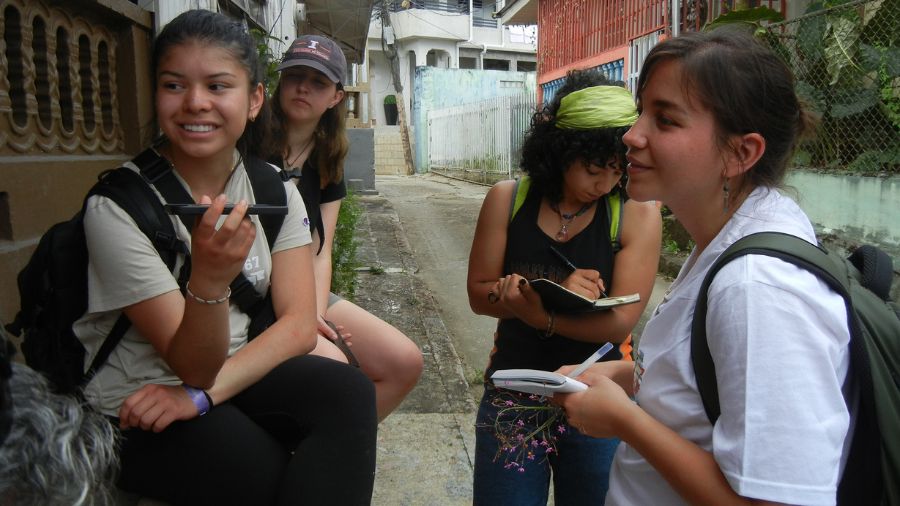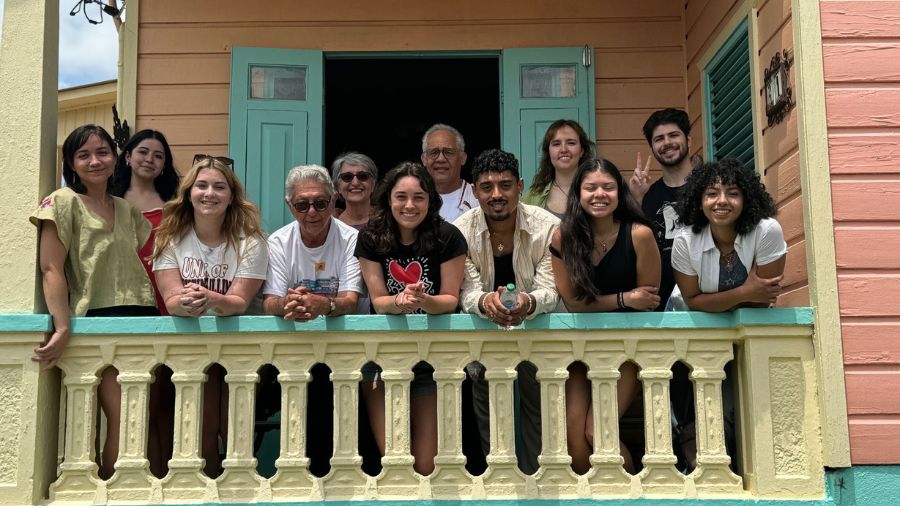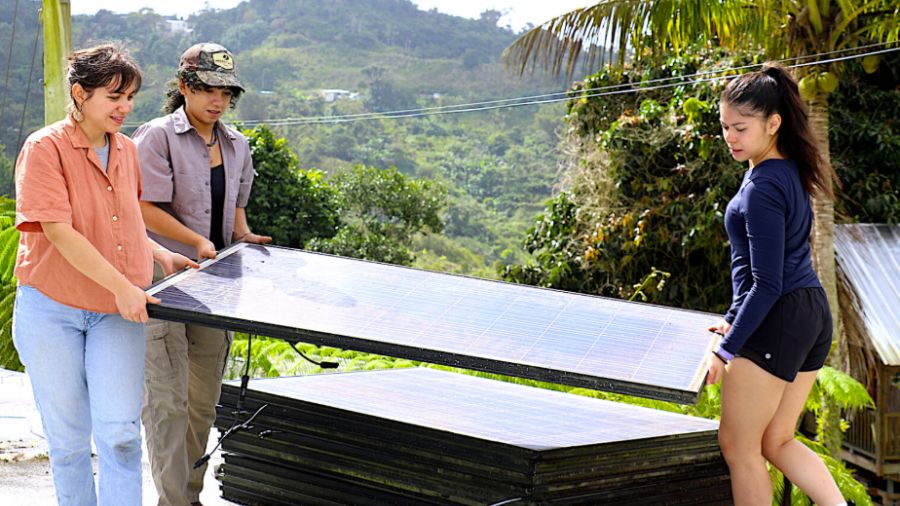Our latest Spirit Cultural Exchange American Scholar Award Winner shares her experience providing community based sustainable design and contributing to the development of sustainable community design in Puerto Rico.
The Spirit Cultural Exchange American Scholar Award
The Spirit Cultural Exchange American Scholar Award provides financial support to exceptional Americans interested in pursing a cultural exchange experience. Spirit Cultural Exchange is honored to support an individual with such remarkable dedication to making a positive impact on communities. Leilany’s journey exemplifies the spirit of the Spirit Cultural Exchange American Scholar Award.
Keep reading to learn about Leilany’s journey in her own words:
Preparing for Puerto Rico
Before traveling to Puerto Rico, I didn’t know exactly what to expect. I had only ever left the [continental US] once before when traveling to Mexico with my family when I was 13, but even then, I had the comfort of being surrounded by family. What excited me most about this trip was the chance to experience a new culture, one shaped by history, resilience, and community power.
Puerto Rico holds a distinct identity shaped by colonial legacies, environmental challenges, and ongoing resistance, all which I had the privilege of learning about firsthand and connecting with in meaningful ways, especially as someone with Mexican heritage.
In preparation for the trip, our class – Community-Based Sustainable Design in Puerto Rico – dove into readings and discussions on Puerto Rico’s complex relationship with the United States, its struggles with an unreliable power grid, and the island’s long-standing resistance movements. Central to our learning was Casa Pueblo, a community-based environmental organization advocating for environmental justice and energy independence, and the group that we would be working with during our time abroad. Despite our prior research, no amount of reading could prepare me for the impact of experiencing their work in person.

First Impressions
After a long day of travelling, which included intense games of Uno and several flight delays, my class finally landed in San Juan. Upon arriving at the beautifully colored streets of San Juan, filled with life despite the late hour, I felt a rush of excitement for the coming week as I fell asleep to the sound of cars passing by blasting reggaeton out of stereo speakers.
Our time in Old San Juan gave us an essential grounding in the island’s history. From its Indigenous roots to centuries of Spanish and U.S. colonization, and now to present-day movements for autonomy and justice, every building and street corner seemed to hold a story.
After spending a memorable time in San Juan, we all packed tightly into a van to make our way to Adjuntas, a small town surrounded by green rolling mountains where Casa Pueblo was based and where we would spend the rest of our week. I’ll never forget falling asleep to the sound of coquí frogs whose nightly lullaby left a gentle imprint on my mind that I find myself missing.
Casa Pueblo’s Mission
Stepping into Casa Pueblo felt magical. The space serves as a community hub filled with murals, newspaper clippings, and evidence of decades-long resistance. It radiated warmth, pride, and purpose.
Casa Pueblo’s impact goes far beyond its walls. In a region where blackouts are common, they’ve equipped schools, plazas, and vulnerable households with solar energy to ensure power for essentials like medical devices. I had heard about Puerto Rico’s unreliable grid before, but the reality didn’t hit me until someone pointed out a blackout on the first day of our arrival. We were sitting in Casa Pueblo’s air-conditioned, solar-powered theater while other residents and businesses in town sat in darkness.
Without this grassroots energy system, many more stores within Adjuntas would face spoiled food, and elders could be left without power for life-saving equipment. That’s the reality Casa Pueblo is working to transform.

Sustainable Design in Practice
Throughout the week, we witnessed how this model of energy independence fuels sustainability, resilience, and hope. We helped install solar panels at a local school, planted coffee trees, and packaged roasted and ground coffee beans whose sales help fund Casa Pueblo’s work. One of my favorite moments was visiting Bosque Escuela, a forest blooming with wildflowers and where conservation and community meet under a canopy of green.
But what stayed with me most were the stories and the conversations with people who welcomed us in and spoke about love, loss, and change.
We returned to one of the neighborhoods to reconnect and listen. The same solar-powered corner store we visited earlier had once again become a hub of life – kids buying snacks, elders playing dominoes, and neighbors trading stories. Some shared memories of a beloved bakery that once stood nearby, and others spoke of friends and family who left after Hurricane Maria. They pointed out the quiet voids of abandoned homes and overgrown lots.
The Spirit of Adjuntas
Still, even in these absences, there was generosity and strength. Carmen, a resident with a solar-powered home, invited us in with warm cornbread and coffee. As we sat in her living room, she told us, “Even when we have nothing, we always have something to give.” That moment captured the spirit of the community: care as resistance, generosity as resilience.
Another neighbor insisted we keep his domino set as a gift. It was a simple gesture, but it spoke volumes about the love that lives here. In Adjuntas and throughout Casa Pueblo’s work, I saw what it means to reclaim space – not just physically, but also emotionally, with care, dignity, and purpose.
This experience has reshaped how I understand sustainability, gaining a new perspective on how it isn’t just a set of design principles, but also how sustainable design can be a deeply human process rooted in care, equity, and collective memory. Casa Pueblo showed me that environmental justice is inseparable from cultural resilience and that true sustainability must be community-led, place-based, and rooted in love.
As a Sustainable Design student, I often think about systems, materials, and form. But this trip reminded me that behind every sustainable solution are people like Carmen and the neighbors in Adjuntas, whose daily acts of resistance and generosity shape the built environment just as much as any architect or planner. This transformative experience has deepened my own identity as a first-generation college student and has taught me valuable lessons that I will carry with me into both my personal life and professional career. I had the pleasure of being able to make so many meaningful connections with the students and professors I traveled with, as well as the people we met in Puerto Rico, making this truly one of the most memorable experiences of my life.

